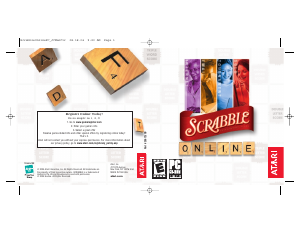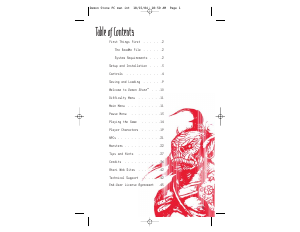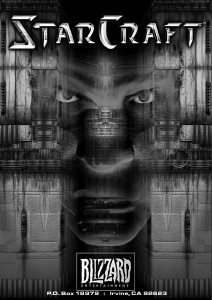
4. Premium Word Squares: The score for an entire word is doubled when one of its letters is
placed on a pink square; it is tripled when one of its letters is placed on a red square. Premiums for
double or triple letter values, if any, are calculated before doubling or tripling the word score.
If a word is formed that covers two premium word squares, the score is doubled and then re-doubled
(four times the letter count), or tripled and then re-tripled (nine times the letter count).
Note: The center square is a pink square, which doubles the score for the first word.
1. Letter and word premiums count only on the turn in which they are played. On later turns, letters
already played on premium squares count at face value.
2. When a blank tile is played on a pink or red square, the value of the word is doubled or tripled,
even though the blank itself has no score value.
3. When two or more words are formed in the same play, each is scored. The common letter is counted
(with full premium value, if any) for each word. (See Turns 3, 4 and 5 under Scoring Examples on
page 14.)
4. BINGO! If you play seven tiles on a turn, it’s a Bingo. You score a premium of 50 points after total-
ing your score for the turn.
5. Unplayed Letters: When the game ends, each player’s score is reduced by the sum of his or her
unplayed letters. In addition, if a player has used all of his or her letters, the sum of the other
players’ unplayed letters is added to that player’s score.
6. The player with the highest final score wins the game. In case of a tie, the player with the highest
score before adding or deducting unplayed letters wins.
Note: The game ends automatically if all players make three consecutive turns in which zero points are
scored (Pass, Exchange Tiles, unacceptable word or two blank tiles).
The above rules are for the Standard
SCRABBLE
game. See Tournament Rules (pages 32-33) and
Game Preferences (pages 20-21) for rule and gameplay variations.
4. New words may be formed by:
Adding one or more letters to a word or letters already on the board.
Placing a word at a right angle to a word already on the board. The new word must use one of
the letters already on the board or must add a letter to the pre-existing word. (See Turns 2, 3
and 4 under Scoring Examples on page 14).
Placing a complete word parallel to a word already played so that adjacent letters also form
complete words. (See Turn 5 under Scoring Examples on page 14.)
5. Blanks: The two blank tiles may be used as any letters. When playing a blank, you must select the
letter that it represents. It remains that letter for the rest of the game.
6. You may use a turn to exchange all, some, or none of the letters in your rack. To do this, click on
EXCHANGE, and then click on the tiles you wish to exchange (up to all 7), and then click on DONE.
This ends your turn.
7. Any play may be challenged by the next player (unless Auto Challenge is enabled; see Game
Preferences on pages 20-21). If the play challenged is unacceptable, the challenged player takes
back his or her tiles and loses those points. If the play challenged is acceptable, the challenger
loses his or her turn. All words made in one play are challenged simultaneously. If any word is
unacceptable, then the entire play is unacceptable. Only one turn is lost on any challenge. See
Game Screen on page 8 for more details.
8. The game ends when all letters have been drawn and one player uses his or her last letter; or
when all players
pass
three times in a row.
Scoring
1. The score value of each letter is indicated by a number at the bottom of the tile. The score value of
a blank is zero.
2. The score for each turn is the sum of the letter values in each word(s) formed or modified on that
turn, plus the additional points obtained from placing letters on Premium Squares.
3. Premium Letter Squares: A light blue square doubles the score of a letter placed on it; a dark
blue square triples the letter score.
13
12
ScrabbleOnlinePCManInt 8/26/04 3:21 PM Page 12












Praat mee over dit product
Laat hier weten wat jij vindt van de PC Scrabble Online. Als je een vraag hebt, lees dan eerst zorgvuldig de handleiding door. Een handleiding aanvragen kan via ons contactformulier.